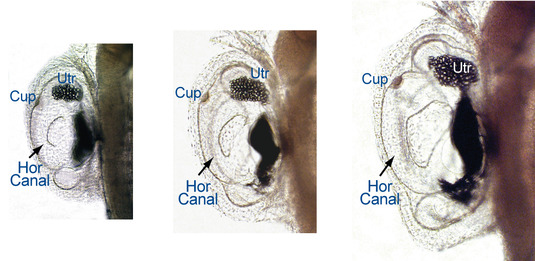3. Ontogeny of vestibulo-oculomotor reflexes
Taking advantage of the Xenopus model in development, we investigate the onset and performance of the optokinetic reflex, using a variety of moving visual stimuli. A high-speed video analysis coupled with electrophysiological recordings is used to identify the functional capacity and ontogenetic plasticity of the optokinetic reflex. In all vertebrates vestibular and optokinetic reflexes are required to stabilize gaze in a frequency-specific task sharing. In addition, the corollary discharge of the spinal cord motor command provides a stable representation of the world during locomotion. Thus, retinal image stabilization appears to be organized as the combined activity of sensory-motor tranformations and intrinsic efferent signaling. Therefore, the major goal of this approach is the dissection of the different contributors and the determination of their respective functional bandwidth and mode of interaction.

Semicircular canals increase in size during Xenopus larval development. Photomicrographs of the left otic capsule, viewed dorsally from developmental stages 46–49, illustrate the increase in dimensions of the horizontal semicircular Canal (Lambert et al 2008).

